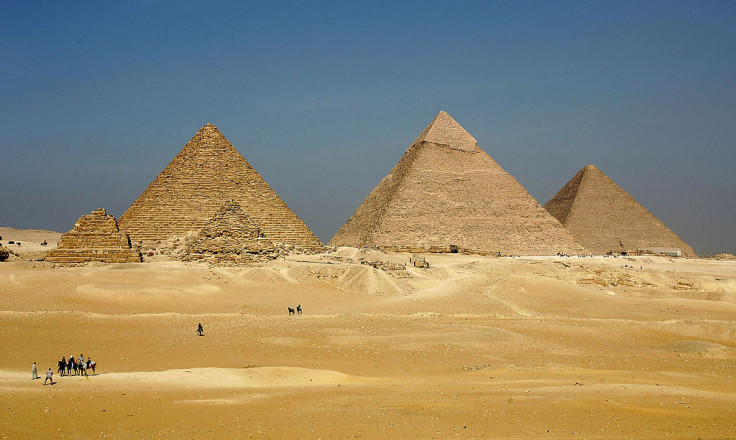Ancient Egypt: Archaeologists think they've found a secret chamber in the Great Pyramid of Giza
Last year, the team located two 'anomalies' inside one of the seven wonders of the ancient world.
Is a secret chamber in the Great Giza Pyramid about to be discovered? Archaeologists using cutting-edge technology are hard at work to identify the location of a mysterious cavity inside the iconic Egyptian structure.
Ever since it was launched in 2015, the ambitious Scan Pyramids project has attempted to pierce the secret of the Pyramid of Khufu, the largest of the three Giza pyramids and one of the seven wonders of the ancient world.
Last year, the team located two 'anomalies' inside the Great Pyramid – a cavity at the upper part of the entrance gate and a void behind the walls at its northern eastern side – leading to intense speculations that they could correspond to a secret forgotten chamber.
Over the past year, more research has been carried out to determine the nature of these anomalies as well as their function and size.
The researchers have now gathered more data at the site thanks to sophisticated techniques that include infrared thermography, 3D reconstruction and muography, which produces images by recording particles known as muons. They hope their analysis of the data will soon reveal the precise location of the chamber.
Mehdi Tayoubi, president of France's HIP Institute which is involved in the investigations reportedly told AFP: "All the devices we put in place are designed to find where the cavity is located. We know there is one, but we're trying to find out where."
Staying cautious
Many Egyptologists have been wary of these efforts to map the interior of the Great Pyramid of Giza and to uncover its secrets. They are unconvinced that the supposed cavities are indeed secret chambers. Egypt's Ministry of Antiquities itself was cautious, repeating that it was too early to say that the cavity was an undiscovered room and that much more work was expected to reach a conclusion.

Michael Oakey, vice-chairman of Sussex Egyptology Society told IBTimes UK that this type of research project rarely amounted to anything significant.
"Techniques such as ground-penetrating radar and the technologies being used by Scan Pyramids tend to be notoriously open to interpretation and therefore misinterpretation - just look at the recent disagreements and varying results of the investigation into what might lie hidden adjacent to Tutankhamun's tomb."
"It's well-known that the Great Pyramid contains various voids in addition to the easily-accessible corridors, galleries and chambers — the best example being the "relieving chambers" above the King's Chamber, an architectural device to spread the huge weight of the stone blocks above it and prevent the chamber from collapsing. It's likely that there are other voids elsewhere in the pyramid, created either accidentally when internal blocks settled or broke, or deliberately when a need was perceived to spread loads to stabilise the structure during building."
Even if any hidden chambers are indeed discovered, the likelihood that it contains fascinating treasures such as gold and mummies is extremely low.
© Copyright IBTimes 2025. All rights reserved.






















